Working with plywood throughout my career has shown me how versatile of a material it is, how sturdy it is, and how stunning it looks in any space. I think plywood is an incredibly efficient use of natural material that has been engineered to reduce some of the limitations of solid wood, and is now used in almost every facet of our living environments including buildings, cabinetry, furniture – the list goes on. I’m Joel, a plywood geek, and I’m going to take you on a journey and show you why you should be using plywood for your projects too. So pull up a stool (made from plywood, of course) and let’s delve into this world.
Why Listen to Me?
I’ve been working professionally as a cabinet maker and furniture designer for most of my life. I was born and raised on a Mississippi cattle farm but spent most of my professional life in Atlanta, Georgia. After earning my degree in Industrial Design from the Savannah College of Art and Design, I went on to earn my qualification as a cabinet maker. I spent over ten years honing my craft using plywood, and nowadays I work on a freelance basis for various furniture manufacturers. Here’s some examples of my work.
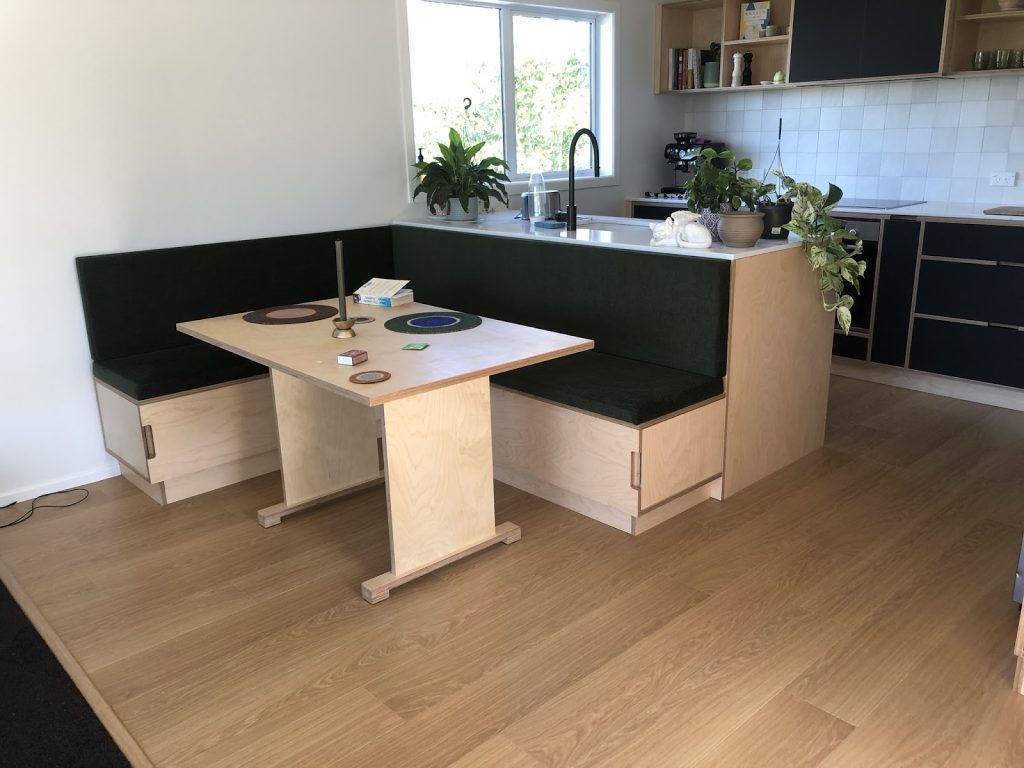
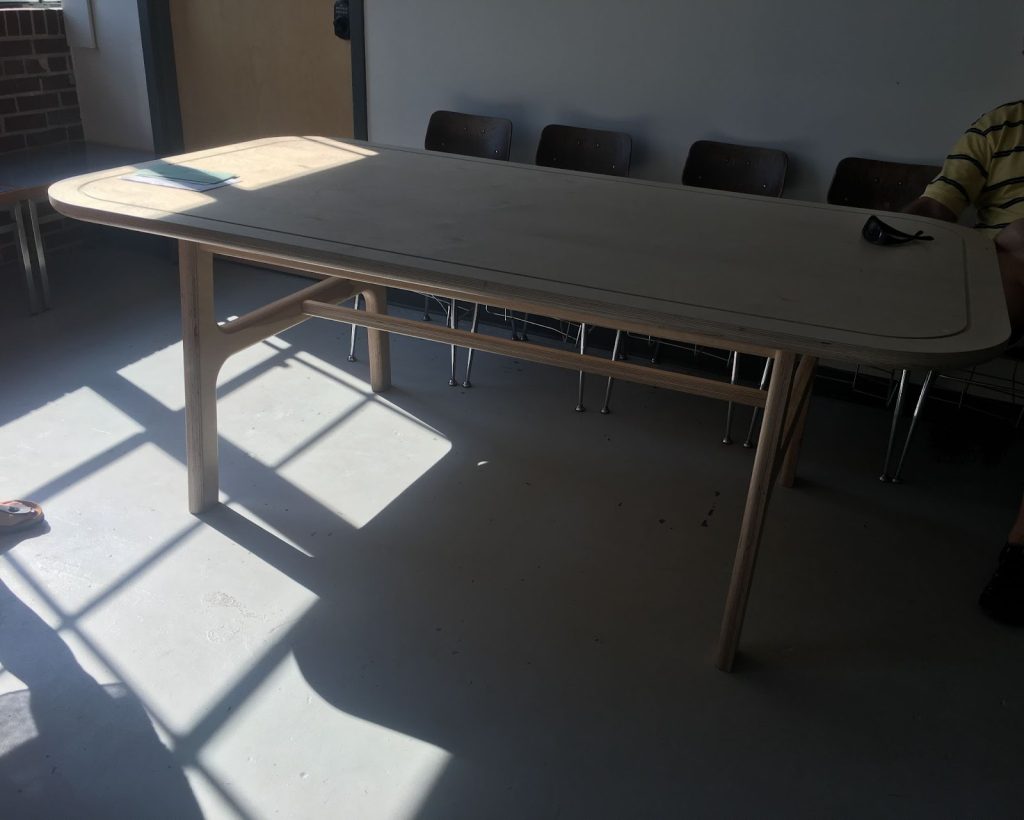
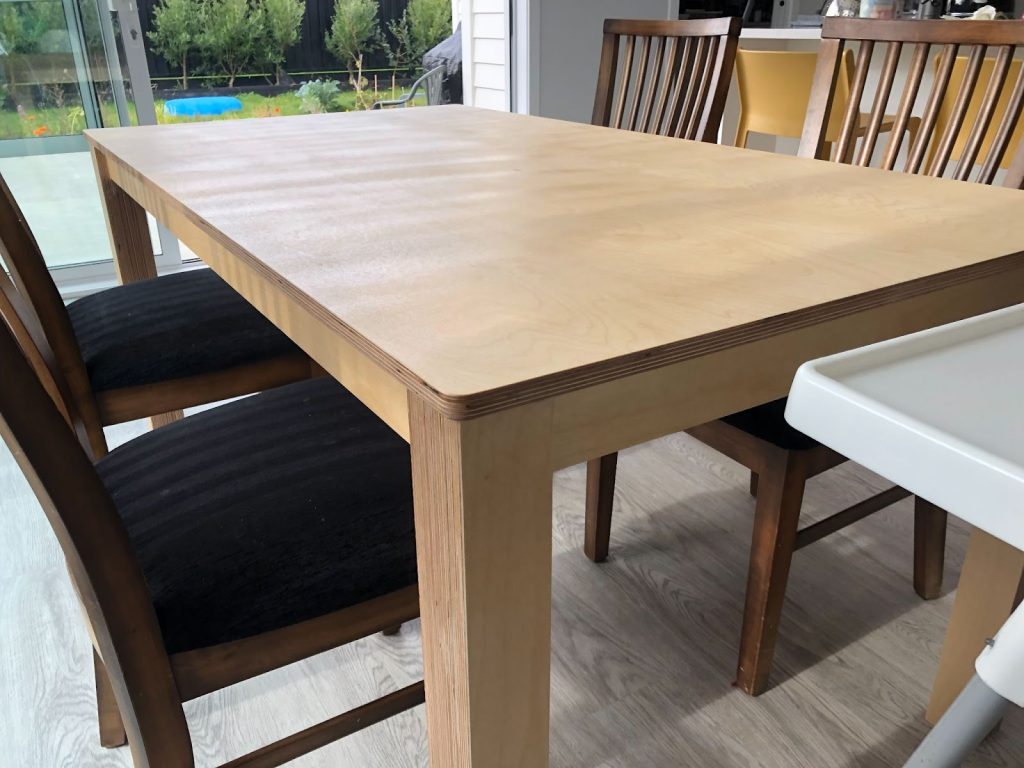
Why Use Plywood?
Let’s get into the nitty gritty – why should you bother with plywood compared to solid woods, fiberboard, particleboard, or any non-wood materials? Let’s start with plywood’s unique composition – Plywood is made up of cross-laminated layers of wood veneer, and because each layer is in tension with the next it creates a dimensional stability not found in solid wood, while still being a lightweight material. Another unique feature comes from plywood veneers being shaved off the raw timber – a bit like an old-fashioned apple peeling contraption. This makes it possible to have large lengths and widths relative to the thickness of material and still be strong across both dimensions. If you’re building something with a large surface area, plywood is a great choice for uninterrupted wood grain.
Plywood is also very versatile, and this makes it useful for a variety of projects that require curved shapes. Thinner sheets can be formed around a frame, or using another technique called kerf bending, that allows thicker sheets of plywood to be bent. Even compound curves are possible by forming your own plywood in a mold.
Perhaps most important when thinking about furniture – plywood is beautiful. A sanded down sheet of ply used to build a table, chair, or kitchen cabinet creates a look that is both subtle yet striking. Depending on the species of tree used, the natural grains can create a light and airy appearance, or a darker and more contrasted look, which will give your space a natural vibe.
Types of Plywood
There are more types of plywood than I can list here, but these will get you started:
Birch Plywood
A hardwood plywood that has good strength, beautiful visible grain texture, and is easy to finish. It is also known for having nearly no voids, so when you cut into it, no nasty surprises are waiting to be found. This is why birch is the most common plywood used in furniture making.
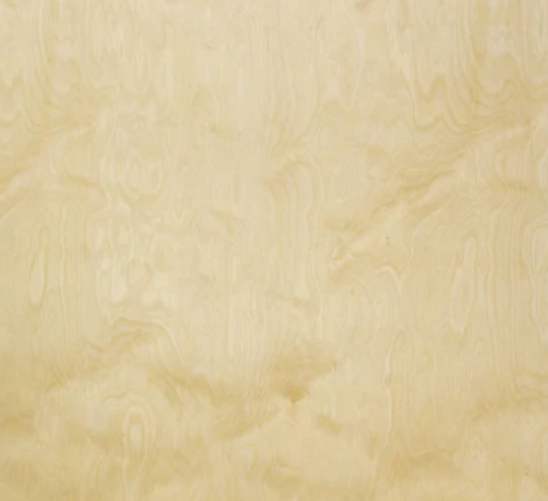
Maple Plywood
Another great furniture-grade plywood found in North America is maple plywood. It has superior strength to birch but comes at a higher price. For the majority of projects, birch will get the job done but maple is always an option if you want to check it out.
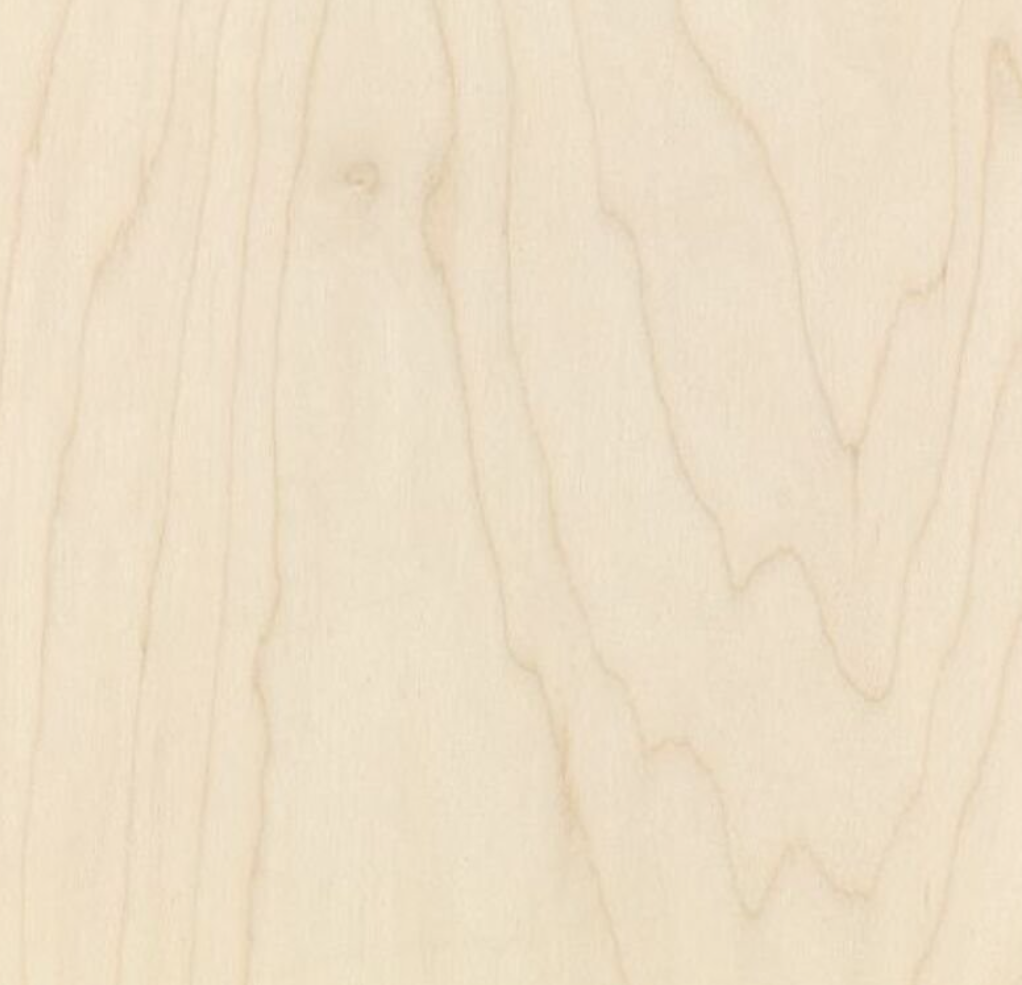
Veneers
Many other species are not great for making plywood or would be prohibitively expensive. This is where veneers come in. Plywood veneers are a common way to apply different species to birch or maple cores so you can get the best of both worlds. This keeps the cost within reason while maintaining the durability and aesthetic strengths of birch and maple. Here are some of my favorites:
Walnut – The dark rich tones make this an excellent choice for anyone who wants to create a cozy atmosphere with their furniture.
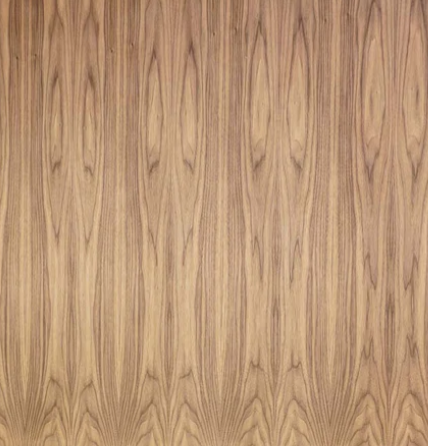
Ash – A cooler and more neutral grain pattern means that this veneer is able to fit into whatever space you want, and adds a refreshing natural vibe whether in your kitchen, living room, or bedroom.
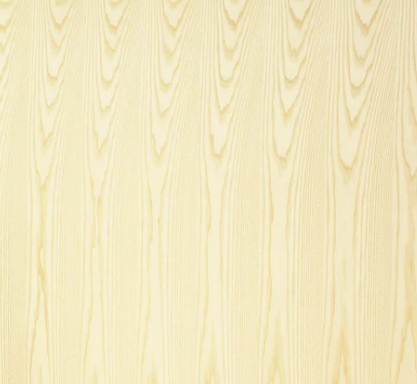
White Oak – I’m sure you’ve heard of white oak, as it’s a popular choice among furniture makers. Beautiful warm tones, but is still fairly light in color.
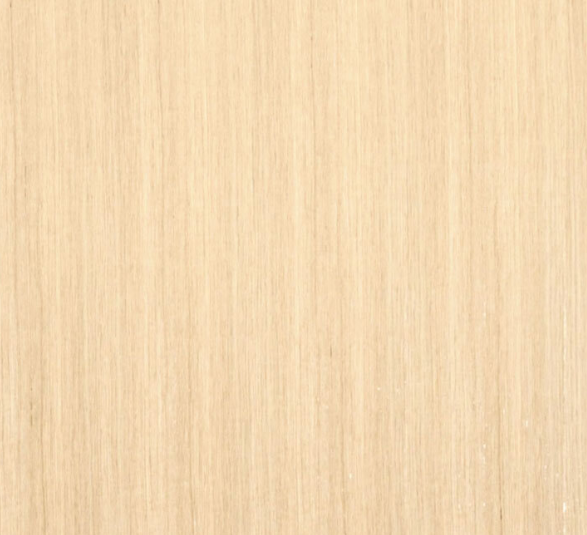
Grades
It can be a daunting experience to go to a lumber store for the first time and be confronted with the different grades of plywood. What do they mean and how do they apply to the project you’re working on? Let’s break it down:
The rule of thumb is – use Grades ‘A’ and ‘B’ for furniture and features that are outward facing, and ‘BB’, ‘C’ and ‘D’ for anything that isn’t going to be seen by many people such as subflooring or interior walls.
• Grade ‘A’ is the highest quality, with very few to no imperfections, and often comes pre-sanded or pre-finished.
• Grade ‘B’ is still good, but may have some small knots and may not come pre-sanded.
• Grade ‘BB’ is often nearly as good as ‘B’ but may have a handful of patched knots.
• Grade ‘C’ will have some noticeable knots and other issues in the wood.
• Grade ‘D’ will have larger knots and voids and won’t look presentable. It’s not pretty.
Sheathing, ACX, and CDX – What Are These?
If you see a plywood with multiple grades, that means it will have one side of each – so ACX will have a clean looking side but also a back with more knots and voids. The ‘X’ stands for the exterior grade adhesive which has glued the A and C sides together. These types of plywood are construction plys and can be a great choice for lining a garage, but aren’t really suitable for furniture making.
Plywood Cores
Veneer Cores
These are typically made using 3 or 5 layers for a 3⁄4” sheet of plywood. The layers are made up of thin strips of wood, or really thick veneers. They are made from a combination of a center and crossband veneers that are alternatively layered. This core has great strength and flexibility, but depending on the board the edge is not always the best looking, and can be prone to warping.
Multiply Cores
Multiply cores are usually made using 13 thin veneer layers for a 3⁄4” sheet of plywood. These thin layers create a beautiful edge pattern. The higher number of layers helps reduce warping of the material which makes it a great choice for furniture making.
Plywood Alternatives
Here are some of the other sheet materials you might come across when looking for material for your project.
Medium-Density Fibreboard (MDF)
This material is known for being consistently thick and smooth, and this makes it a great choice for projects where you’ll be painting and doing detailed work. However, it is heavier than plywood while being less rigid and more brittle. This makes it perfectly fine for panel projects like cabinets, but not great for furniture.
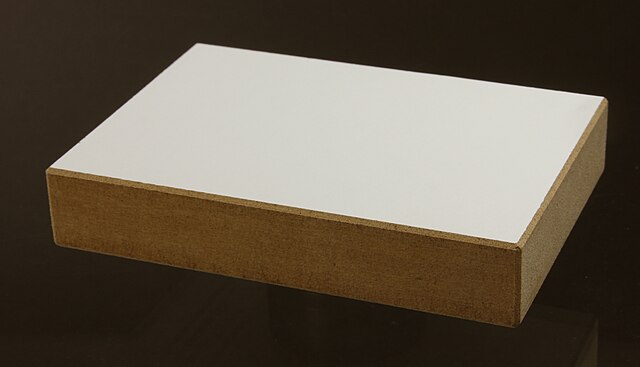
Particleboard
Similar to MDF, this material is made up of small bits of wood that have been glued together and is often covered with a veneer or a laminate on its face. This material is commonly used in flat pack furniture (think IKEA). While it is light and generally quite cheap, it’s not good at taking heavy weight – we’ve all had that one IKEA shelf that finally cracked under the pressure, right?
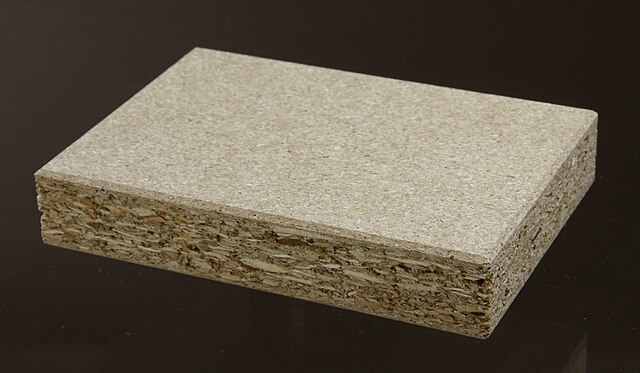
Oriented Strand Board (OSB)
OSB is commonly used as an alternative to plywood, particularly in structural applications like subflooring or sheathing, as it is durable while also being cheaper. The main drawback is that it is more susceptible to moisture damage. It can also look good as a wall covering for a more industrial look. You can definitely use it for shop projects but the fit and finish leave something to be desired.
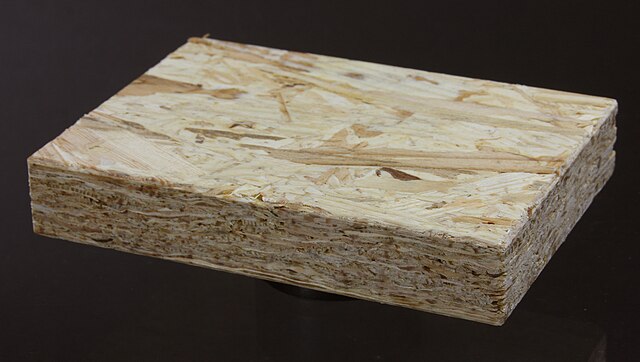
What’s the Verdict?
While these alternatives definitely provide their own advantages, and are oftentimes cheaper than plywood, I think it’s clear that plywood is stronger, more durable, and has a better appearance. When you’re building furniture or redoing your home interior, consider whether you’d rather spend a bit more now to have something long lasting and beautiful, or need to spend more money in a couple of years when the material starts to wear down.
What to Consider When Buying Plywood
As well as checking the grade, also take the time to think about what species of wood you want your plywood to come from – this can affect the aesthetics of your furniture. Something important to take note of is your budget. How much are you willing to spend overall? Don’t forget, mistakes happen, and material can be wasted. If you spend all of your budget on the finest ‘A’ grade plywood but then lose half of it to a poorly placed saw cut, will you have enough to start over? You can always contact Highland Woodworking to see if they have a board stretcher in stock.
Where to Buy
The classics of home improvement in the USA are stores such as Home Depot and Lowes, but they tend to focus on construction grade plywood and the alternatives mentioned above. This can be good for prototyping, but is generally not suited for furniture projects. I recommend asking your local woodworking store or a local cabinet maker where they source furniture-grade plywood. If the big box store is your only option I recommend going with Purebond Plywood – found at Home Depot.
The Non-Plywood Stuff
Highland Woodworking has got you covered for all of your other needs, whether you want to cut, sand, or stain your plywood furniture you can find it all here.
A professional cabinet maker and furniture designer – Joel was raised on a cattle farm in Mississippi and has spent the majority of his professional life in Atlanta, Georgia. After obtaining a degree in Industrial Design from the Savannah College of Art and Design, he pursued further qualifications in cabinet making. For over ten years, Joel has specialized in working with plywood, and now operates as a freelance designer for various furniture manufacturers. Find more of Joel’s writing about plywood design and project ideas at Sheet Good.

